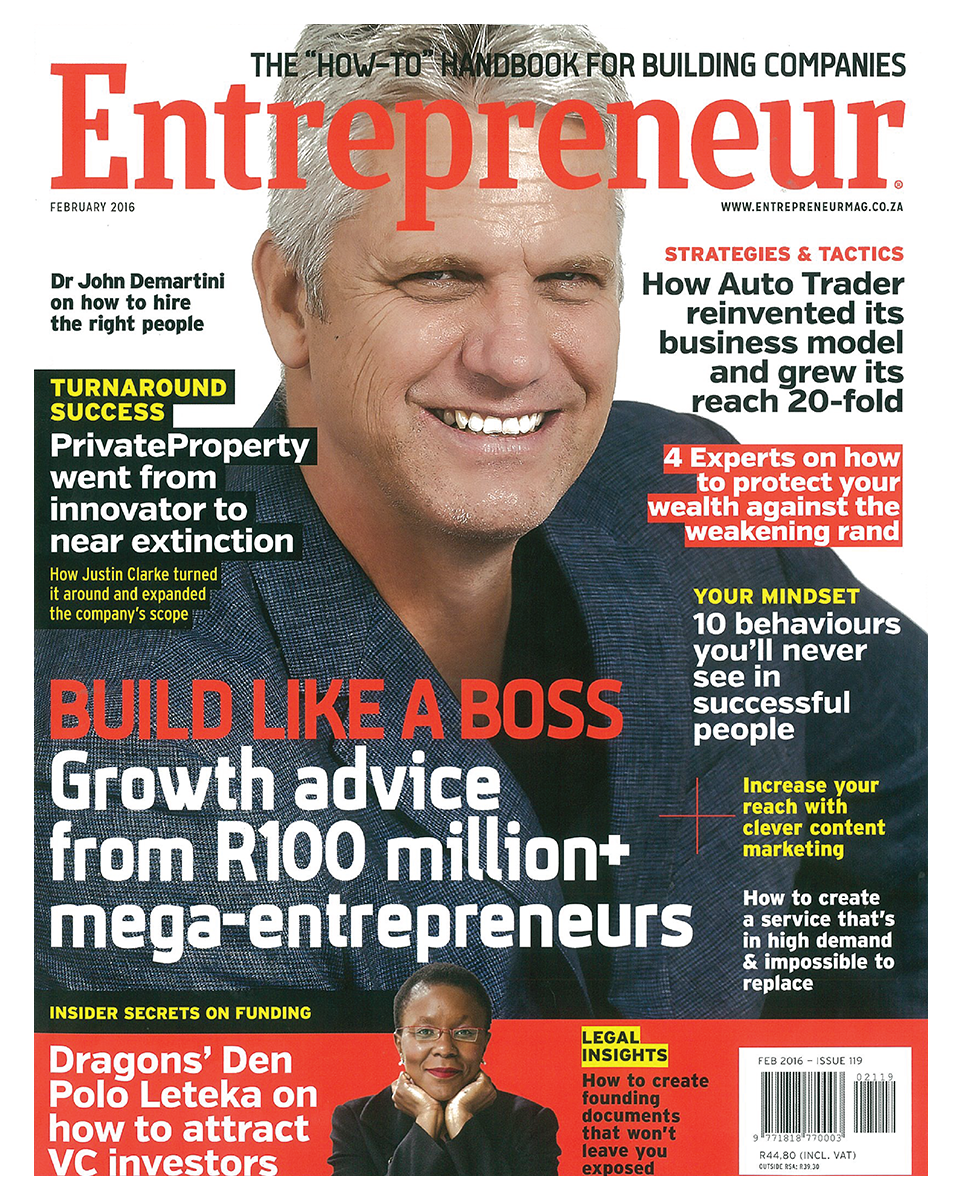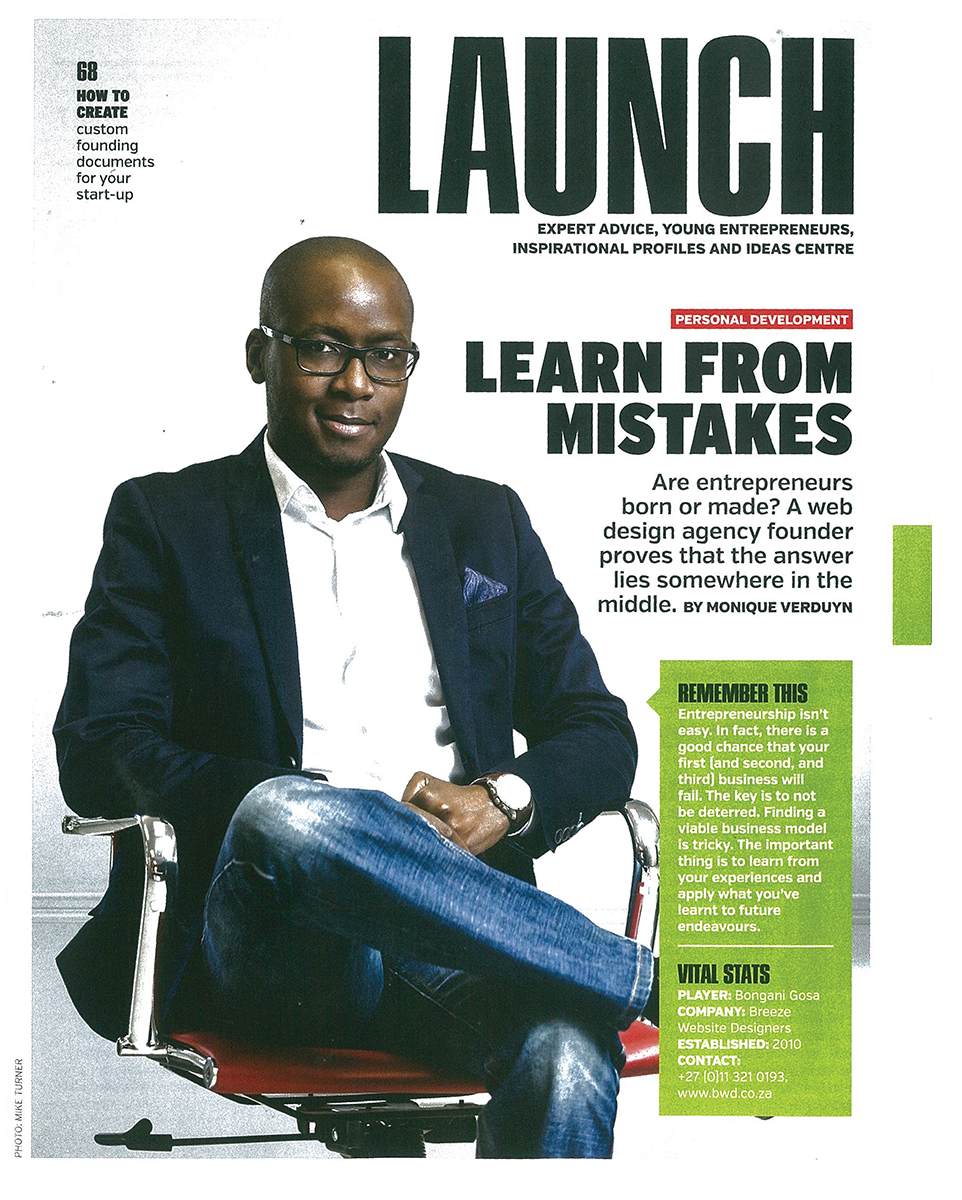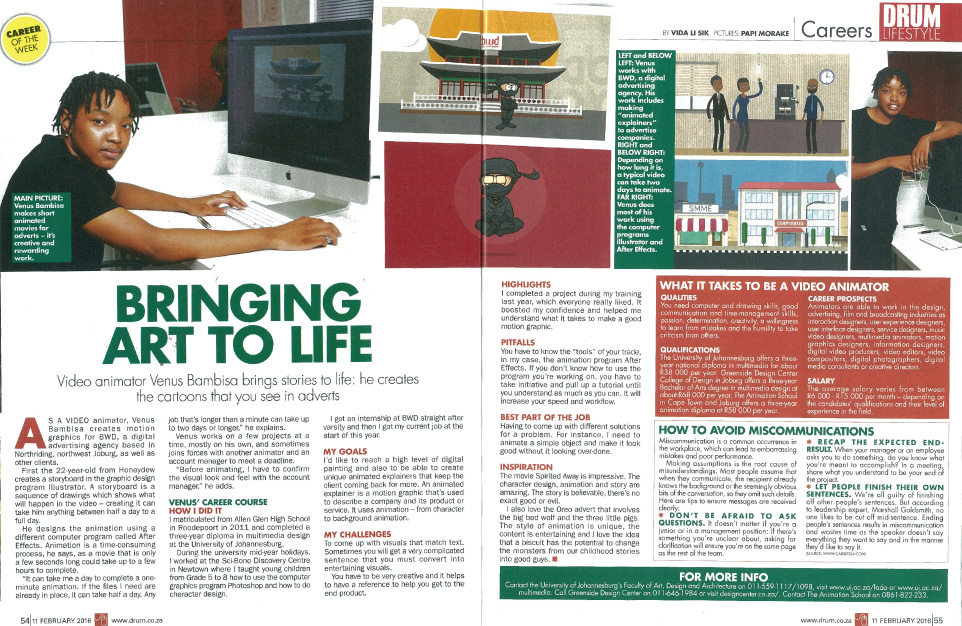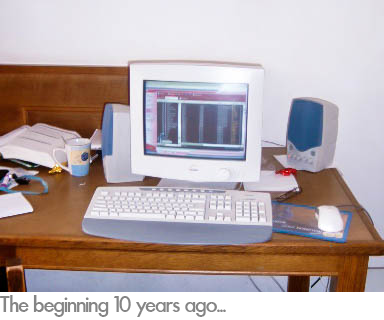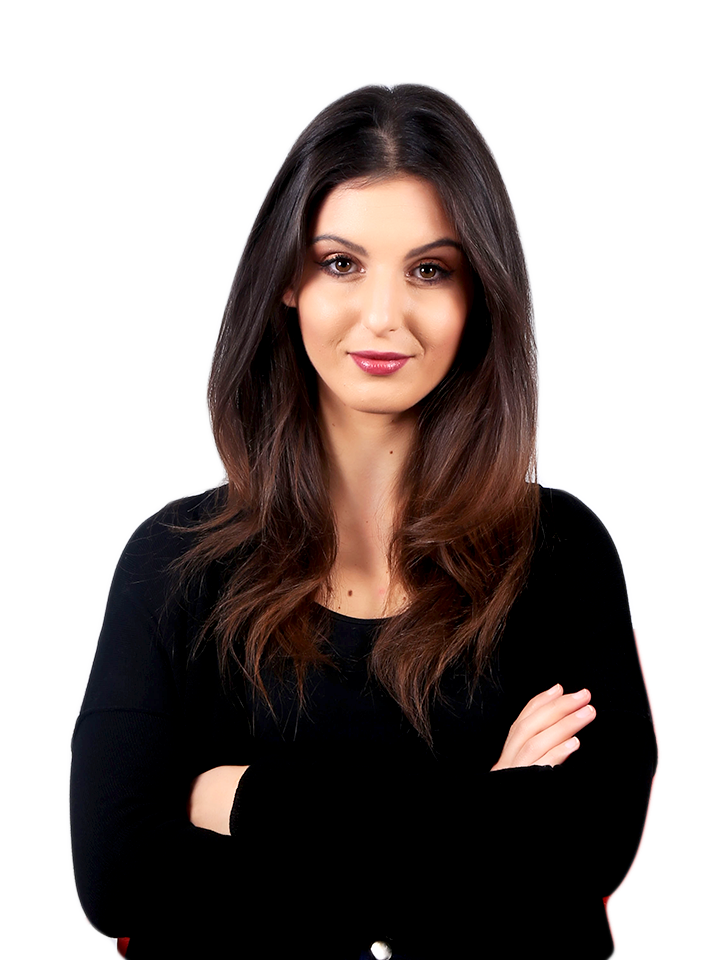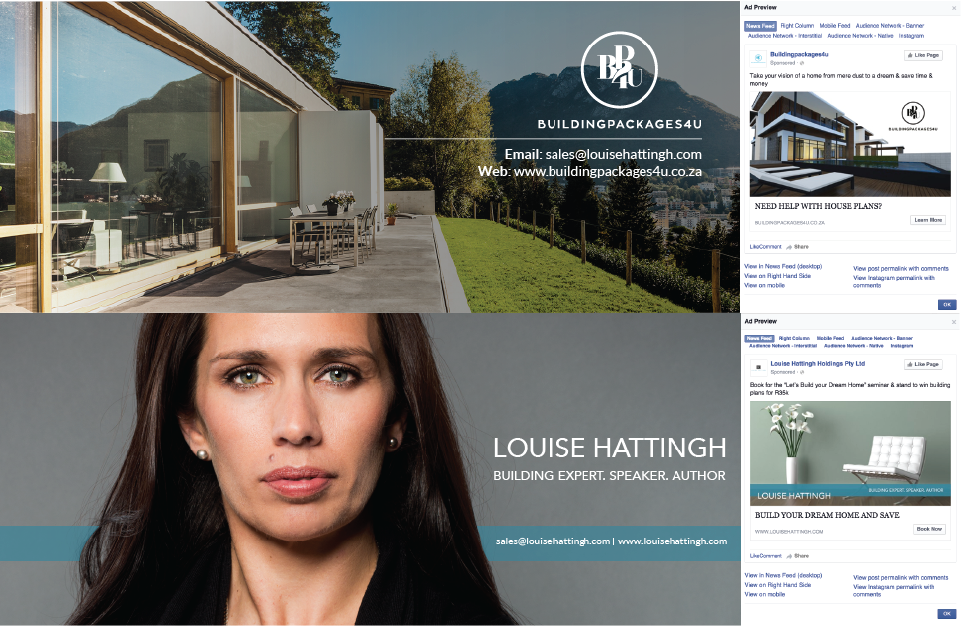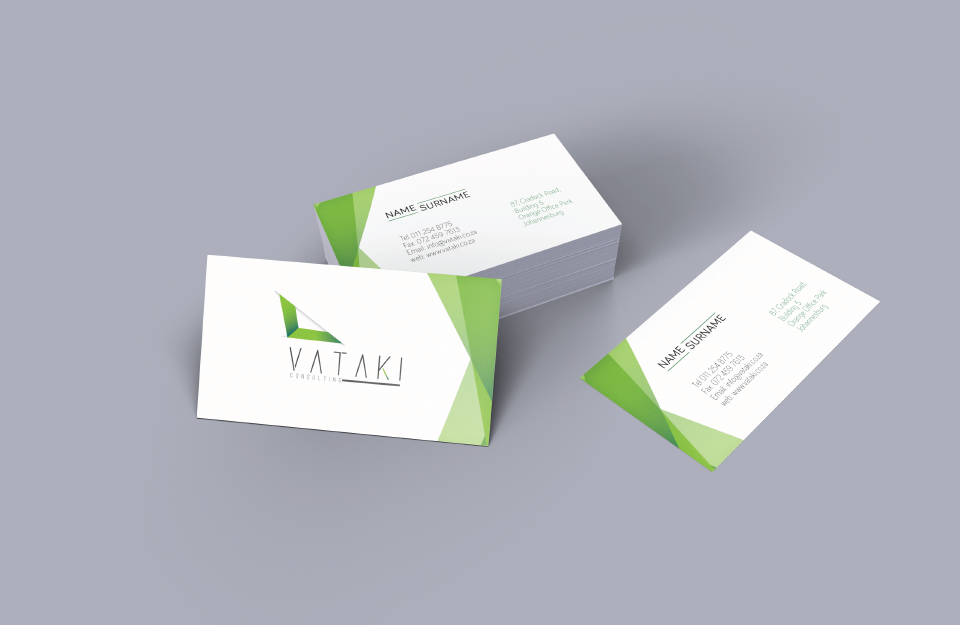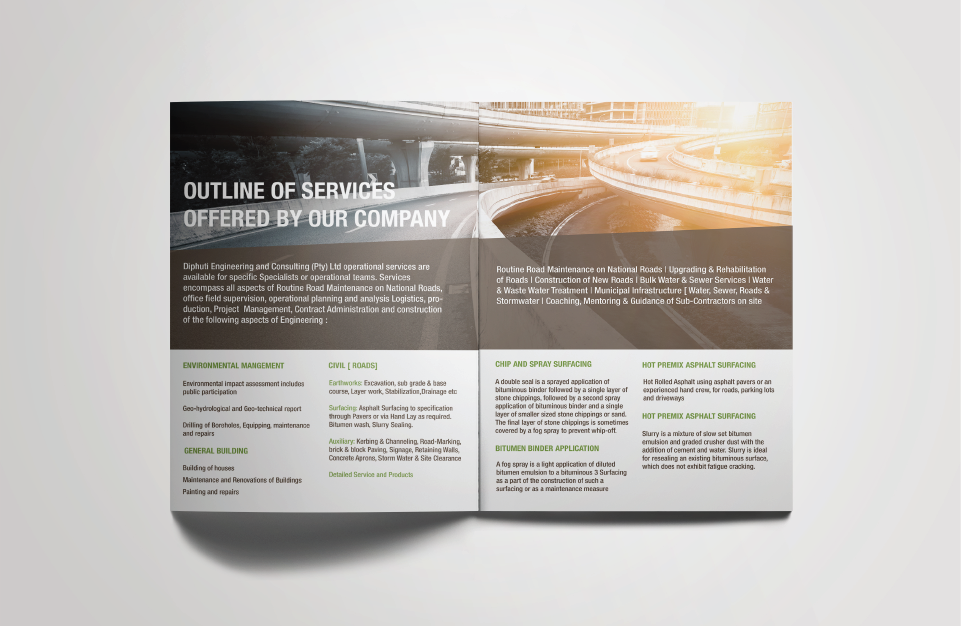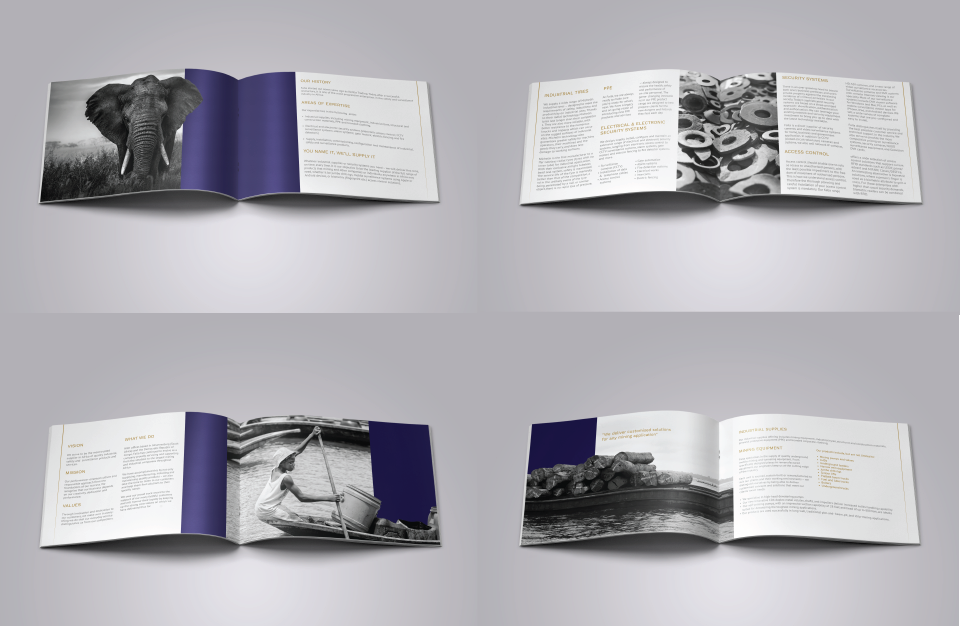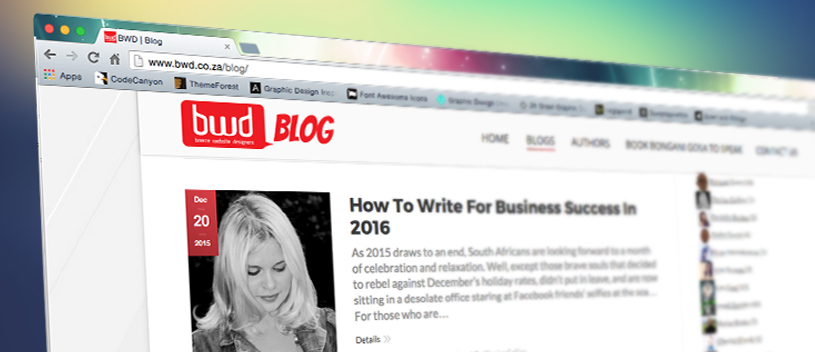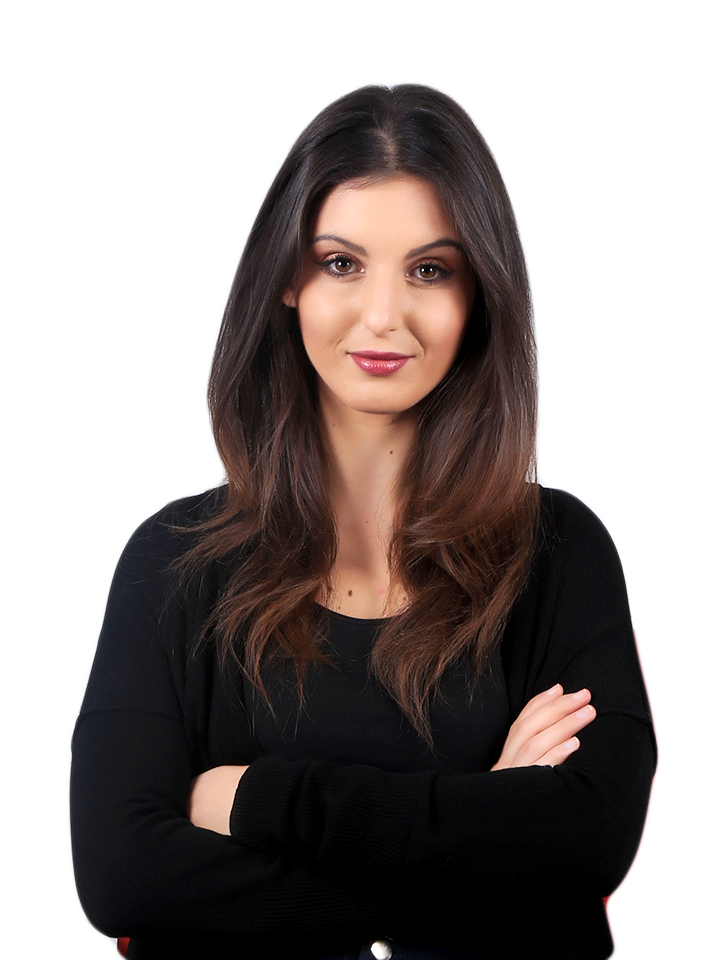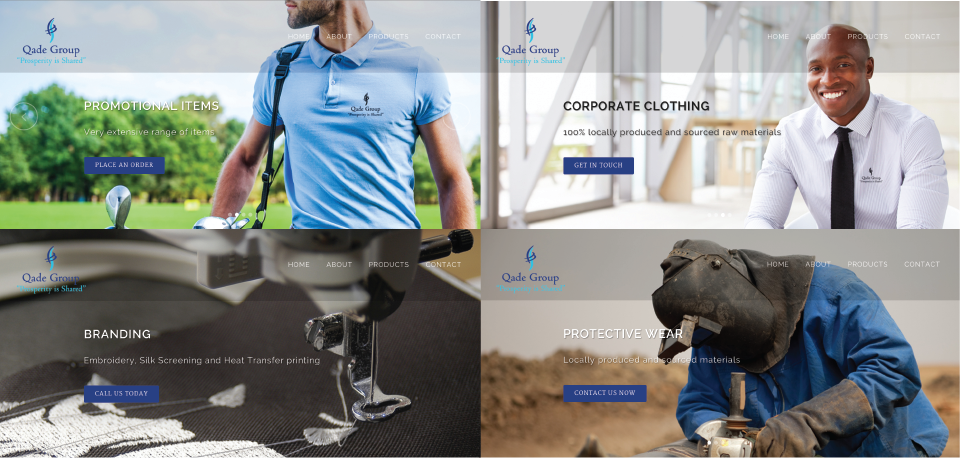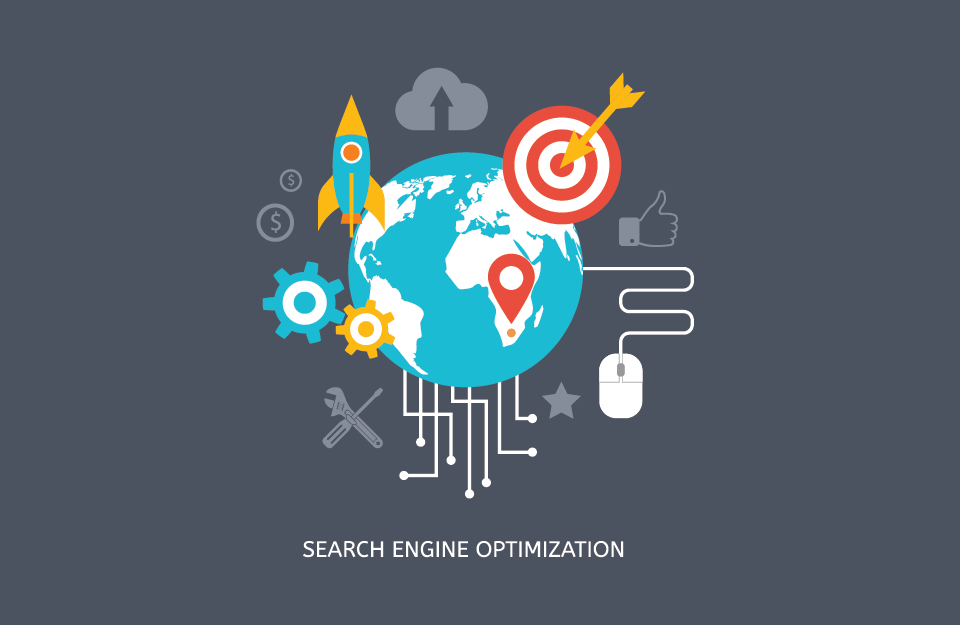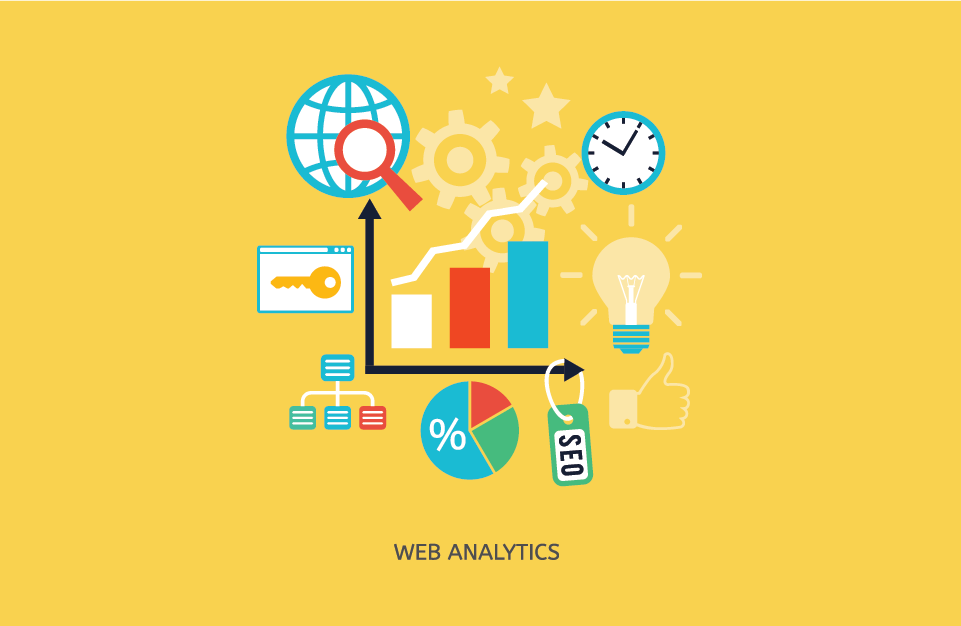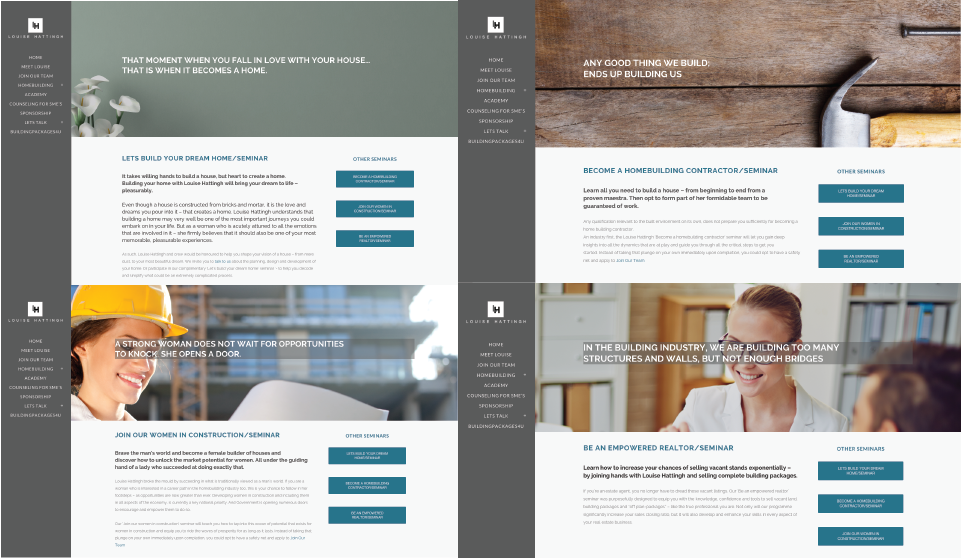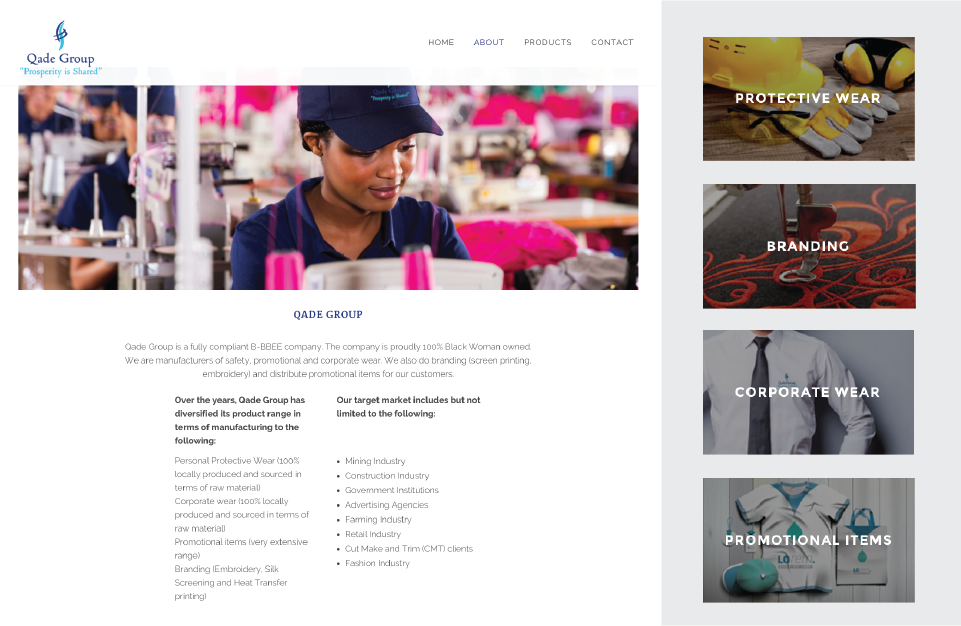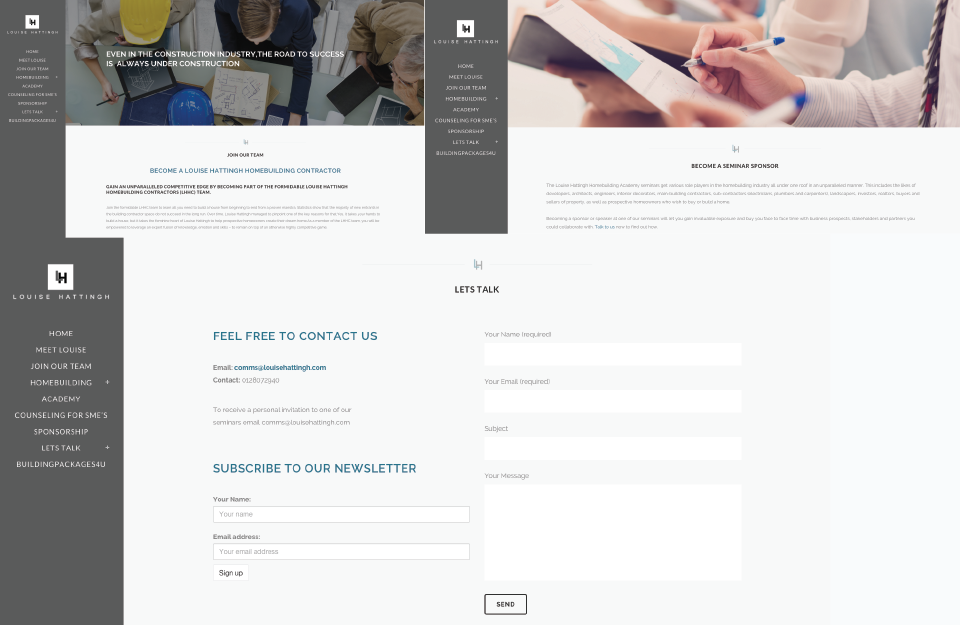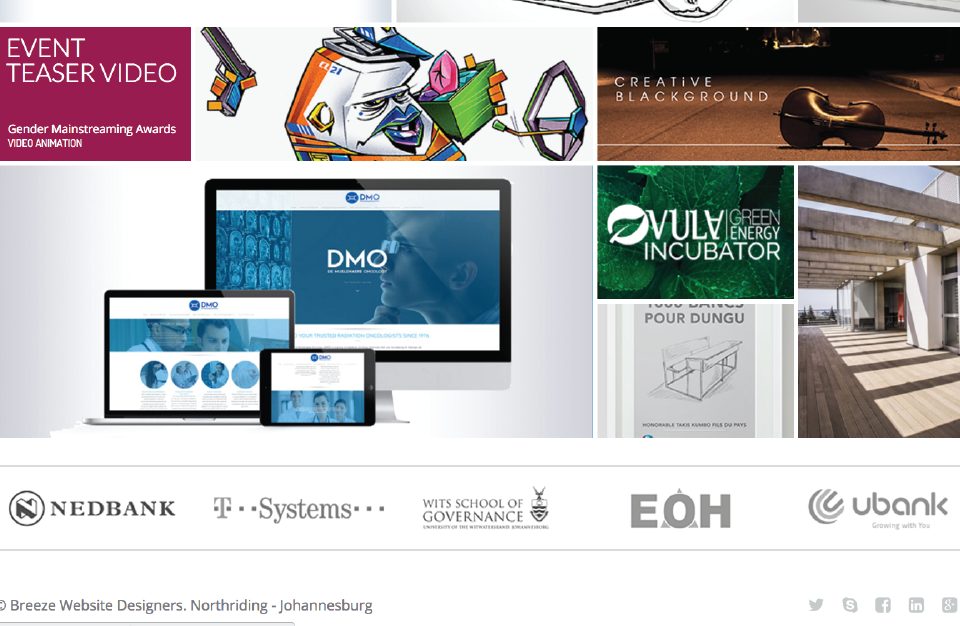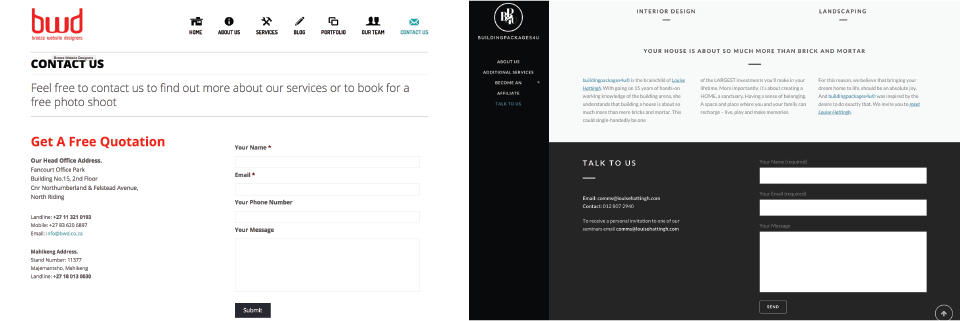Posted at 18:37h
in
Thought Leadership
Adriaan and Louis Groenewald, together with Richard Angus, introduce you to Bongani Gosa from Breeze Website Designers (BWD). Selling cow dung to make some cash during his school holidays is what drove Bongani Gosa to become an entrepreneur. He has tasted failure, but got up, dusted himself off and tried again.
This is Cliffcentral.com. At Sibanye Gold, we’ve come to realize that there’s nothing small about SMMEs, the small to medium-sized business employ millions of people and pay billions in tax every year, which is why we pride ourselves in providing support, leadership coaching, assistance, and advice to help grow SMMEs. You could say we’re giving them a golden opportunity to grow. Sibanye Gold, we are one. Cliffcentral.com.
Adriaan: Business master class at the moment here on Cliffcentral. I’m Adrian Groenewald, with me, Richard Angus, and then we have our panel. We’ve got a special guest today, Ellis Mnyandu, former editor of Business Report, now on his own, building his own future of business. This is very relevant in his life, maybe most of us to some degree. And then We have Michael Hinton, CEO of Finatix, also from USB. And, of course, Richard Angus.
If you want to join our live audience, which means you sit and listen to the Business Skills conversation and then you listen to the SME interview we’re going to have in a moment. And then we engage the live audience after that, where you stand a chance of pitching your business for 30 seconds. Then all you do is email Kevin@leadershipplatform.com. That’s two Ps in the middle of one word, Kevin@leadershipplatform.com.
Bongani Gosa, welcome.
Bongani: Thank you, sir.
Adriaan: It’s good to have you with us. Your whole stories probably great. But I love the way you describe the way you fell, I mean, you came down hard. And maybe you didn’t see the risks. Maybe you didn’t do a proper PESTEL analysis. But you got up, and that’s why you’re in the studio today. This is why you’re sitting here actually, not because you started a web design business and it’s going okay. What caught my eyes was the cynical negative side which you turned positive, and that was the fall.
So we’re going to talk about all that and more, a couple of general questions, because we feel you can assist our audience and all of us in the studio. And then let’s see if we can also see what you took away from the first half-hour conversation.
Richard, let’s take the man on a journey or he can take us on a journey.
Richard: Yeah, well, I was going to say perhaps we should ask Bongani to take us on the journey right from the start. I always like to allow listeners to get a sense of some of the stuff that I had a preview of. So, Bongani, tell us about those early days.
Bongani: Okay, early days started when I was around 16 years. So what would happen is that during school holidays, my parents wouldn’t give me pocket money.
Richard: Because you had so much of…
Bongani: No, their argument during school holidays is that, “You’re not going to school. You’re not going anywhere. There’s food in the fridge, so you don’t need money.” So that was a bit of a challenge for me. So what I also noticed is at the time, because I’m from a village in the Northwest called Magamonset [SP]. At the time, so…
Adrian: Called what?
Bongani: Magamonset. In Mafikeng, the Northwest province, yes. So at the time, people were struggling to keep their lungs clean. And my father Hazketel [SP], so a village North, “I could just take the dung, and then package this manure, and sell it to these guys.” So I had a problem, they had a problem. So if I fixed their problem, then my problem will be fixed. Because I’ll then have a bit of money in my pocket.
So what I did is I picked the cow dung in small money bags. So that was my samples. Because I couldn’t get big bags. So I’d go door to door.
Richard: I’m glad you stuck to small sample sizes. That would be a smelly business.
Bongani: Yeah. Then I went door-to-door, showing people my sample, telling them, “Okay, here’s the sample. If you buy, then I can deliver later.” And then that’s pretty much how tried…I did that over when I was 16 and when I was 17, so two years every time during the school holidays.
And then what happened was I matriculated. After matric, then I started IT. So after studying…while studying IT in second year, because I was studying…the [inaudible 00:04:00] that I was doing was software development. What I picked up with software development was that it’s not really possible to have a software development shop if you’re just one person. You would need something like a business analyst. You would need something like a project manager. You would probably need a couple of developers. I was just only one guy.
So I noticed that what I could do was website design. So that, I could do by myself. That’s pretty much where the whole website design idea came about.
What I then did is that during my second year, I read as much as possible around website design. What I also did is that I volunteered for the school newspaper to be the webmaster for the school newspaper. So by me volunteering at the school, then I got a chance to interact with the school’s webmaster. Then he showed me some stuff that was not necessarily taught in class. Because when you…sorry, during our diploma, I think we did web for like six months. So it wasn’t really a lot of time spent on it. It was just to familiarize ourselves with it. But the school webmaster helped me to understand.
So I volunteered second year, third year. Then I graduated. Upon graduating, I think I worked about maybe a year or two. Then I started my own business. So when the business started, I think I was very excited that, “Okay, this thing’s going to take off.” But what I noticed was just because you have technical skills to do something does not necessarily mean that you’re going to succeed in business doing the technical side.
Because I jumped in, I understood the technical side, but I didn’t understand the business side of business, that you need to be able to do sales; after sales, you need to manage your cash flow type of thing. Because the issues that…if your clients are taking long to pay you, that becomes a problem because your landlord is not interested in your story that, “Hey, this one…” No, no, no. They want rent. If you have a car…
Adriaan: They’re running their own businesses.
Richard: They’re running their own businesses, exactly.
Bongani: Yeah. If you have a car, the bank also doesn’t want to hear stories that you’re…the debit or the balance or stuff like that. So…
Adrian: And that happened with you, did it?
Bongani: Yes, yes. That…
Richard: So you went from being involved in web design to being a storyteller. Is that what you’re trying to tell us?
Bongani: Kind of. Kind of. So it all depends. So I opened the business. I bumped into a couple of situations where I couldn’t keep up with my ball. So I actually had to close shop twice. So this is actually the third attempt, if you want to call it that.
Adrian: How long has the third attempt now gone for?
Bongani: Third attempt…
Adriaan: How long have you been going now?
Bongani: Five years now.
Adriaan: Okay, is that the longest so far?
Bongani: That’s the longest.
Adriaan: So you are learning. Your trajectory is in the right direction.
Richard: So I would comment to say I think you can take the side of the almost ready to fail starter type of scenario, which normally if there’s going to be a failure, generally it happens in the first two years. I think at five years, you can put yourself a little beyond that point. So you’re not too big to fail. But you’ve at least crossed that first Rubicon of time that you generally experience.
Adriaan: Bongani Manure wasn’t a good business then. I guess you just got pocket money and nothing more. You didn’t decide to expand that.
Bongani: Well, the business…I wasn’t really making a lot. So I just wanted extra pocket money.
Richard: You just wanted to go to the movies.
Bongani: Yeah.
Adriaan: That’s brilliant. You must really want to be an entrepreneur guys. Ellis, if you want to.
Ellis: I was going to say, Adriaan, I’ve met a lot of web developers. But I’ve never met anyone that’s sold dung before.
Adriaan: And then become a web developer. They say all entrepreneurs must get down and get dirty.
Ellis: That’s right.
Adriaan: And that they must really…
Richard: Well I’m wondering what the connection is between the dung business and the web business.
Bongani: Yes.
Richard: We’ll find it before. Exactly.
Adriaan: So I mean, and I think there’s some important things that I want to just highlight in what you’re saying. I’m very interested with the fact that you went up there and you said to yourself, “Okay, I’m going to volunteer and do a piece of work for somebody to hone my skills.” Because I think that’s so important. People think that they can start up a business or start up with an idea and it’s going to go to instant invoicing and instant revenue generation. And in fact, “Excuse me, why are you not prepared to pay for my time?”
And I personally have spent a lot of time with people over many years where I’ve done things for people not expecting a payment but because I’m building a relationship with individuals and because I’m building a connection that will help my business in a wider platform and often because I believe it’s just the right thing to do.
So clearly you recognize that was an important thing.
The other thing that I just want to focus on is you started off in many of your falls, let’s call them the learning stages of going through two or three…two businesses into the third, is that you realized you were a technical expert but that you needed some groundwork in other elements of business. And we’ve talked about this before in the show of the technical experts starting a business. And the reality is that, let’s call it the innovator or the creator, has a certain role to play. The technical expert has a role to play. But there is also the element of the entrepreneur that has to come to the fore. And that’s the ability to sell, the ability to manage others, the ability to lead an organization, the ability to create the systems and processes that allow the business to function.
So just give me some insights into…you’re obviously, third-time lucky. You’ve now got a business that’s been going for five years. What are some of the things that you wish you had learnt, let’s call it, or knew in round one that if you had known them then you maybe wouldn’t be on round three. What are some of those, “Hey, I wish I’d done this, would have thought about that?” Hindsight is perfect vision, of course.
Bongani: I think the biggest one is pretty much mentorship. Mentorship is probably the most important thing that you want to get when you’re starting a business. Because when you start, the problem is you don’t know what you don’t know. When I jumped in, my thinking was that, “You know what? I did door-to-door sales when I was 16, so I know that I can sell.” I thought that.
Adriaan: You’re not scared at least.
Bongani: Yeah, I’m not scared to sell. So what I did is that then I went to the public phone, did cold calls. So people are scared of doing cold calls. I thought I could do it. I did it. But even though I was not scared to sell, the business is not just sales and technical, there’s different other issues that go in-between.
So I could say that the biggest thing is just mentorship. That’s the one thing I that I wish I knew.
Adriaan: Did you wish that you had asked for more mentorship, that you would have approached a mentor or two. Is that what you’re saying?
Bongani: 100%.
Man: Can I just ask a question on that, if you could unpack that. Because I think that’s very important. I think it’s partly what this show and this platform is about, to provide that guidance and mentorship. How do you think you should have approached the mentorship question?
Bongani: What I should have done, I should have went to any business person that I knew, even someone maybe that was running a that a tech shop or something, someone that has experience in business, and just sat with the person, and spoke to that person. And they told me how they did things.
Because what tends to happen is that, okay, let me put it to you this way. So I’ve been in business now for 10 years. The business turned 10 last week, Monday the 11th of January. What I’ve noticed when I look at how things have been unfolding is that business is fairly straight forward and simple. But it’s only straightforward and simple after you’ve failed a couple times and you see, “Okay, this thing is actually straightforward.” But the problem is when you don’t know, you don’t know, which is a [inaudible 00:12:16].
Adriaan: Did you have a network with you, or you were pretty much running solo?
Bongani: I was just running solo. My network was my peers, which didn’t help a lot because we knew the same type of things, which doesn’t help.
Richard: One of the things that I’ve often identified is that in a country like ours, the reality is that there are so many people that have such a wealth of knowledge. And often what happens is they don’t just put it out there and say, “I’m willing to share.” And then there are people that need the support but they don’t know who to approach and how to engage. And I think if there’s one thing that we can look at doing with the platform and what I’ve learned is that the principle of being able to…and we’re doing it right here with our live studio audience, is being willing to share and create those networks of trust that allow people to expand beyond, let’s call it the obvious, and the obvious mentors.
And in my experience, there are many people out that can actually help companies and individuals. And they’re willing to help. But often it’s just that good old, I’ll call it the match making of mentorship, just doesn’t connect. It doesn’t hit the road properly. And I think that’s also a function of our past. As a country, we don’t think of entrepreneurship as, let’s call it a core skill that we have as a country. We think in our corporate worlds and the world of employment.
I often wondered, if you did a survey of matriculants and you said to them…or maybe you go a little further back. You go to a grade 10 class and you say to them, “So, what do you think of your future? Where do you think your future’s going to be? What are you going to do?” And it would be quite interesting to see the blend of who turns around and says, “I want to run…I’m going to run my own business,” versus, “I’m going to go look for a job.” Because I think that drives where we’re at.
But let me just…I’m going to be the devil’s advocate for everyone out there and for yourself. I hear what you say about mentor. And I agree. But this principle of you don’t know what you don’t know, that is what makes someone jump. If you knew all the risks. If you knew the pain of cash limit. If you knew the real…the reality of running a little business and worrying at night that you can’t put food on the table and pay for the kids’ education. If you really, really knew all that, a lot of people won’t jump.
The fact that one is ignorant makes one take that step. So where do you find that balance between ignorantly thinking you can conquer the world, and jumping from your corporate job, and just going for it, versus doing a PESTEL analysis, doing a proper analysis of my environment, and seeing things that I should see, and getting good mentorship to educate me properly. Do you guys see what I’m saying? I really think that ignorance and just the dream pumping inside of you makes you actually jump.
Bongani: Yeah. No, true. I do agree that ignorance also helps with you jumping into the mentorship thing. Because what I’m also doing with a couple of friends and business associates is that in March, we’re launching a mentorship program. We call it Each One, Teach One.
So the idea there is to find entrepreneurs that have been in business for at least a year minimum, but full time. We don’t want chances that they are going to waste our time. So then we match them with one mentor. So it’s like high-quality type of mentorship. Because what’s happening is that the type of mentorship that’s out there, it’s like this group mentorship which doesn’t work. So this one, you will be you will be matched to a particular mentor.
At least if you’ve been in business for at least a year, you can ask questions that will help you. You’re not going to ask us stuff that’s on the internet that you can easily Google. You’re going to say, “I’m struggling with cash flow because of X-Y-Z.” Then someone will say, “Hey, what are your payment options.” And you say, “Maybe 50%,” they say, “Maybe change it to 70,” and stuff like that. Yeah.
Man: I think Richard mentioned a very important point just about where, especially young people, get lost and say, “I’m going to look for a job instead of starting a business.” And I think that pretty much talks to the conditioning that we as a society go through, especially at a young age, impressionable age. So it’s quite gratifying to see people who I knew have transcended that limitation which is imposed on you as a society.
Adriaan: It’s very inspiring. What about the analysis? Let’s just a little bit to the business skills conversation. Then I want to, Richard, we’ve got to analyze how you felt when your business failed. That’s not nice. Surely not, you felt…Let’s get to that personal side.
Richard: I was going to ask a question. I mean we talked earlier about the analysis of the environment. When you did your first startup, what did you see there? Or why did you do it the way you did? What started, what got you going? What did you see happening in the environment?
Bongani: I suppose when I started, because I’ve never actually written a business plan type of thing because I’ve never had a plan to get some kind of funding or to report some kind of investor. I just looked at the environment at the time. Because one of the reasons I studied IT, it was around the dot com boom. So IT people were making tons of cash. So I figured that, “You know what? The dot com boom is mainly affecting big businesses, but small business also want to go digital and to stuff.” So I figured there is a small gap there for guys like me that want to start. So I identified a gap and then I just improved myself with regards to the skills, then tried to fill that gap.
Adriaan: Okay. Now with hindsight being the perfect vision, if you look at your environment in that first business, what went wrong?
Bongani: The main thing that went wrong was cash flow.
Adriaan: All right. And what…because cash flow is a consequence. What drove the cash flow drying up? What was the driver?
Bongani: It was mainly, I think around that time I was either 22 or 23. So number one, it’s a little bit difficult to trust a 23-year-old. Because I think at the time, I charged five grand or something like that. It’s difficult to trust a 23-year-old with 5 grand, especially if he has a small business. So I didn’t have any credibility or track record. So people found it difficult to trust me at that time, at that age.
Adriaan: So it wasn’t necessarily a mistake in your analysis. It was practically back home. It was you, your lack of confidence maybe, credibility, experience, track record. That’s just a normal thing.
Richard: So if I can go to that, that’s in the world of social. That’s the social construct of…
Adriaan: Oh, good point.
Richard: Here’s a black 23-year-old.
Adriaan: Like, PESTEL, it’s the S.
Richard: Yes, it’s the 23-year-old black individual who started a business. “Can I give him five grand of my cash and trust that I’ll get the output?” Now that’s the reality. And I think in the world today, think of all the 23-year-olds that you know. Would you give them five grand of your cash?
Adriaan: Because if you were sitting with Michael and he said, “Right, let’s do a bit of an analysis. You want to go into business. You’re 22, 23. What do you want to do?” Am I right, Michael? That’s what you would say. Let’s look at the social, so technical maybe, economic, all those things, fine, fine. But let’s get to the social element. Will people trust you with no track record?
It’s like a youngster came to me and said, “I want to start a business where I help entrepreneurs network. And they get,” it’s kind of what you do now. And the person sat in front of me and they’ve never run their own little business. They’re working for a government institution. That was their first job. And I said, “Let’s just analyze socially what the acceptance would be out there for you to start helping entrepreneurs find mentors and network at networking events. Maybe you’ve got to first go and earn your bacon and then come back.”
I wasn’t doing a PESTEL. I wasn’t doing an environmental analysis. I was just speaking logic.
Richard: Adriaan, I think the question for Bongani is what is the differentiator?
Adriaan: Quite right. So Richard is saying a 23-year-old comes to you and asks you for five grand. “What are you doing that’s special about you. And why should I give it to you? Why shouldn’t I go with a developer that’s been around for 20 years? What is the differentiator?” And I think as Bongani said, he said, and this is what I tell people, with any decent business, you need three things. You need sales, or market sales and marketing, you need operations, and then you need a back end.
So I think where Bongani was saying, from a mentorship point of view, how much help can you get on all three of those? If he needs help on any of them, maybe he needs help with operations, or maybe it’s the back end, the admin, the accounts, the legal. And so that’s what a mentor can give you. But there certainly are things that a mentor can’t give you, and that’s the X-factor that Bongani’s got that is going to convince me to part with my money for this 23-year-old that I know nothing about, untested, untrained. But maybe I’ve got a gut feel. And that comes down to how well he sells the idea, the concept, and how well he can go through with it.
Man: So marking just on that point then, would it have made some sense to have had some sort of a plan? I mean, I’m not a big plan kind of a person. Because we know entrepreneurs, we have said, “Ditch the plan.” I’m asking this question because obviously with a plan, things like your USP come into play, your value proposition come into play. Is the USP aspect of planning vital in that regard?
Adriaan: I don’t think so at least. I think personally Bongani needs to have some kind of plan inside himself. But what might have been a nice thing for him to do is when he went to speak to his customers, to say, “This is my plan. Trust me. I’m a 23-year-old. I’m venturing out. I’m going for this. This is the plan. I’m not going to show you my 10-point business plan, but I do…I think that this is where I want to go.” And people will buy into you before they buy into a product. That’s what I believe.
Richard: Yeah, one of the interesting things as you engage in this world and look at your unique selling proposition as an entrepreneur is the reality, no matter which way it plays, you’re always going to have those, it’s called those external factors. Now, in your case, you obviously experienced that often, lack of trust, lack of confidence in you as a person, etc. However what…I mean you then did this a second time, okay, which means that you were willing to go through the, let’s call it the step of failure, and then step up to the plate a second time. What gave you the confidence to say, “Hey, let’s do this again. I’ve got this right.”
Bongani: I think what happened is that I kind of knew, because every time I failed, I could…how do you call it, I could see the light. But I was just a little bit far from it.
Adriaan: So the challenge was in the, let’s call it the near future. You could see the long-term view. Now…
Bongani: Yes, yes. I could see that I was succeeding but the challenges that rent was due, that I had to pay installment, insurance, and stuff. And so that’s what made my situation a little bit difficult.
And the other thing is that when it comes to…because I think the company’s called Breeze Website Designers, right? Which makes people think that all that we do is websites. We do branding as well. So branding, if you look at it closely, it’s not nice, let’s say a website, business card, and letterhead. It’s pretty much how you are perceived. It’s part of that branding that I struggled with when I failed the first probably two times. I didn’t brand myself properly.
So now I take that experience and then if one of my clients takes time to sit with me and chat, and then I’m not too sure about how they’re positioned. I’ll tell them that, “You know what? At the end of the day, you’re dealing with people here. So just get those people to trust you.” If you are putting up a dodgy website that you took from your phone, how is this going to get people to trust you? Can’t you just spend 1,000 bucks to get a decent photographer to take decent pictures? The 1,000 bucks is going to turn into 10,000 bucks.
Adriaan: We see a man with a bit of experience in life, eh?
Richard: And what I’ve found really interesting here is you’ve almost followed a bit of a pay-it-forward approach with your own business relative to your failures in the previous two instances to help your current client base. And there’s something really rich in that experience curve. And that, it builds trust. Because you’ve lived through it. So when you say to somebody, “Okay, hold on a second. Let’s understand how you’re going to build this image of your entity, and who you are, and what your brand stands for,” you’re actually referring…because you’ve got this internalized experience from the previous two failures.
And I think that something really rewarding to gain from that is to realize that in failure, there is success. Because you’ve now ticked the box and you’re able to move forward. And what’s more important for me is that you’re able to use that experience to assist others.
The other thing I just want to point out is you kept…you referred earlier to this, the newer elements were quite challenging, and you had failures, etc. But you always had this long-term picture that you could see out there. Now that is the principle of vision, okay?
If you’re an entrepreneur, you must have a clear vision of what you’re able to achieve. If you’re only worrying about the here and now and the immediate, the reality is that long-term visioning is what gets you through as an entrepreneur. If you’re only worrying about this month’s bills, and how many hours you’ve billed, and how many clients you’ve seen and have you sold, you’re really going to struggle to stay the road and stay the course.
Adriaan: It’s probably a balance between vision and desire, a want. Be it just, “I want my own business,” be it, “I want to have my own boat,” be it, “I want to…”, just whatever it is. And the vision, some people are driven very much by their purpose and desire more than the vision. Others, the vision is what draws them.
I know it wasn’t nice to fail. I know you didn’t enjoy it. So I won’t ask that stupid question. But are you glad you failed?
Bongani: Yes…
Adriaan: Honestly, are you really glad you failed?
Bongani: Yeah. I’m super glad that I failed, because I learned quite a lot. Because what’s happening now is that I’m running a marketing company. But I’ve never studied marketing at school. I’ve only been in class where they say, “Marketing A or marketing B.” I’ve learned it off the, I call it, let’s just say off the streets.
So now what I do is that I hire guys that have formal training when it comes to marketing. So where I’m lacking, they come in. So because when I’m sitting with you, let’s say when I’m sitting with a client, I’m talking, I talk reality. But you also need these guys that have their theories and their fancy ideas and stuff. So that’s where those guys come in, and they just help me to take the client’s business to a different level.
Richard: So as we close, just if I can ask you, can you give me three to five things that you go, “Hey, these are the things that I’ve learned that are super critical to the success of a business.” You’ve failed twice. You’re into business number three. You’ve got five years under the belt. You’ve learned principles like…and I’m hearing just on your last principle, a very important principle of “don’t be scared to employ people that are more educated than you.” They might not be more intelligent than you, but they are more educated than you. And I think that is an important lesson.
What are some of the other things that you can think of?
Adriaan: I like that he takes his piece of paper out, folds it. I remember interviewing Victor Hatfield [SP] and I asked him about his leadership philosophy. He took out a piece of paper, notes from a few years back, and he opened it up and he shared it with me. And I actually asked him afterwards, “Can I have it?” He said, “Sure, have it.” I should have sold it.
Bongani: I suppose number one is the thing that I mentioned, is get a mentor. Nothing can replace a mentor in your life. You don’t have to, like me, spend 10 years pushing and pushing, struggling. A mentor will take the 10 years and make it, if you’re lucky, maybe 5. So they’ll shorten your journey to success. So you need a mentor.
Number two is read, read, read. Because if you have a, let’s say, good mentor, the guy is probably busy. They don’t have a lot of time to sit with you and hold your hand and stuff. So you need to educate yourself quickly so that when you sit with that mentor, you ask educated questions. You ask question that can help your business grow, that can fast-track your progress. So you must read as much as possible. Read stuff on Entrepreneurship Magazine. Read stuff on Inc. Magazine. Read stuff related to your industry. Read stuff, I suppose most importantly, especially to a business person, read stuff on human psychology, how a person’s mind works. So yeah, that helps a lot.
And the other one is create processes. Because as soon as you start hiring people, what you’ll notice is that you start saying the same thing over, and over, and over again. And then in your head, you start thinking, maybe you’re crazy or something like that. But if you’ve written out the process, then you just say, “Guy, can you please just go through this document and do that stuff.” It tells him, “Step one, do X, step two, do Y, and Z.”
Because in our office, what we even have, we have a process for when it’s a person’s first day at work. We call it an onboarding manual, what needs to happen. So I don’t need to say, “Have you created a person’s email address?” No, no, no. It is there, on a document. Hey, “The lady’s name is Jade. She’s our account manager, the one that usually does our induction. Hey, Jade, can you just go through the induction manual?” Although she knows it, but she’ll still double-check, “Well, I’ve done X, Y, and Z.” And then she says, “Okay, I’ve done that.” And then there is no issue, there’s no confusion. You see what I am saying?
People, when you say “processes,” they think “complicated stuff.” No, no, no, processes create predictability. Predictability saves time. If you save time, which means you’re saving money. So you need to create processes for a company.
And then number two is volunteer.
Richard: That’s number four, I think.
Bongani: Oh, sorry, number four is volunteer.
Richard: We’re listening.
Bongani: Yes. Volunteer, you could say maybe networking, because people have a misunderstanding when it comes to networking. Networking simply means adding value to other people’s lives. Not meeting people and drinking coffee. So you need to volunteer and do stuff for free.
Richard: Okay.
Bongani: Yeah, because that’s where you meet people. And then after you’ve added value in someone’s life, they’re not necessarily going to repay you tomorrow or something like that, but they know that, “Okay, this person is resourceful. I want to work with this person.” So you just need to volunteer as much as possible.
Adriaan: Okay, so Bongani, our time is up. You probably have more points there and you might bring them into the conversation with SMEs. This is the part we’re really excited about. So they’ve done a draw out there with a live SME audience. There’s five or six of the individuals there who will have an opportunity to engage us. And they will pitch their business for 30 seconds and then ask a question or make a comment. And we’ll comment back to them.
We’ve got an incredible panel here. We’ve got former editor of Business Reporter, our special guest today. We’ve got Michael Hinton, CEO of Finatix and from USB. We’ve got yourself, Bongani Gosa, real entrepreneur, who’s failed, gotten up several times. Richard Angus, speaks for himself, CEO of finance team, been in big banking and everything else. And then me way in the background. Okay, so we’ve got really a great panel here. And just quick break and then we’re going to the live audience.
This is Cliffcentral.com. At Sibanye Gold, we’ve come to realize that there’s nothing small about SMMEs. The small to medium-sized business that employ millions of people and pay billions in tax every year, which is why we pride ourselves in providing support, leadership coaching, assistance, and advice to help grow SMMEs. You could say we’re giving them a golden opportunity to grow. Sibanye Gold, we are one.
Cliffcentral.com



